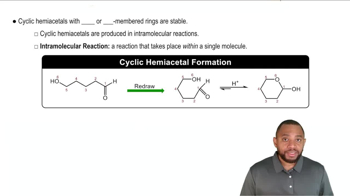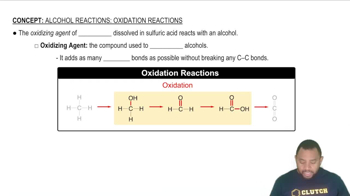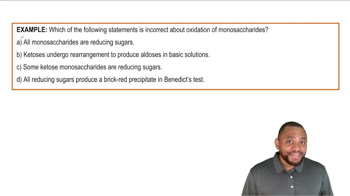Will the following carbohydrates produce a positive Benedict's test?
a. D-glucose
 Verified step by step guidance
Verified step by step guidance Verified video answer for a similar problem:
Verified video answer for a similar problem:



 1:47m
1:47mMaster Oxidation of Monosaccharides Concept 1 with a bite sized video explanation from Jules
Start learning